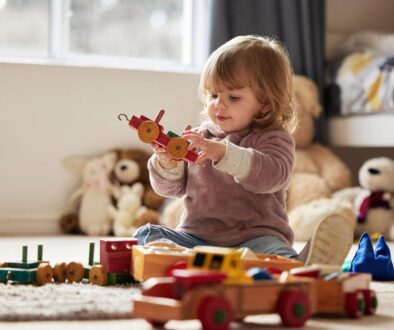Making Transitions Easy: Strategies for Helping Children Navigate Change

Transitions are a part of daily life, especially for children, who move from one activity or environment to another multiple times a day. These changes can be challenging, whether going from playtime to mealtime, from home to school, or from one caregiver to another. Supporting smooth transitions during the early years is key to helping young children feel secure, manage their emotions, and develop positive behavior patterns.
Why Smooth Transitions Matter
Children thrive on predictability and routine. When transitions are smooth, they feel secure and know what to expect. This helps reduce anxiety and stress, leading to a more positive experience for the child. Consistent and predictable transitions help children develop self-regulation skills. They learn to manage their emotions and behaviors as they adapt to changes, which is a vital part of their cognitive and emotional development
How to Accomplish Smooth Transitions
- Give Advance Notice: Let children know ahead of time when a transition is coming. Simple statements like, “In five minutes, we’ll clean up and get ready for lunch,” help them mentally prepare for the change.
- Use Visual and Verbal Cues: Visual schedules, timers, or songs can signal a transition. For example, a specific cleanup song can indicate that playtime is ending. These cues provide a clear and consistent signal that a change is about to happen.
- Create Routines: Establishing consistent routines for common transitions, such as morning routines or bedtime rituals, helps children know what to expect. This familiarity builds confidence and eases the stress of moving from one activity to another.
- Acknowledge Feelings: Transitioning can be emotionally challenging for children. Acknowledge their feelings by saying, “I know it’s hard to stop playing, but it’s time for dinner.” This validation helps them feel understood and supported.
- Involve the Child: Give children some control over transitions by involving them in the process. Let them choose which toy to clean up first or which book to read before bed. This involvement gives them a sense of autonomy, making the transition smoother.
- Be Patient and Consistent: Patience is key. Children may need time to adapt to new routines or transition methods. Consistency in handling transitions will reinforce their understanding and help them feel more at ease.
Smooth transitions are essential for young children as they navigate their day-to-day lives. By providing structure, predictability, and emotional support, caregivers can help children handle transitions more easily, fostering their overall well-being and development. Implementing these strategies requires patience and consistency, but the positive impact on a child’s emotional and behavioral health makes it well worth the effort.





